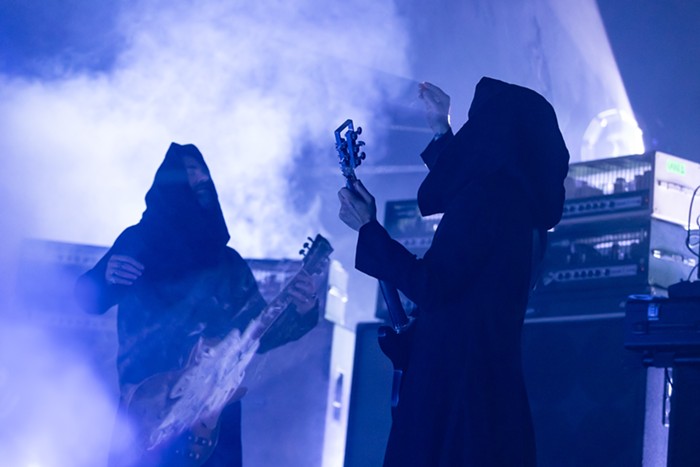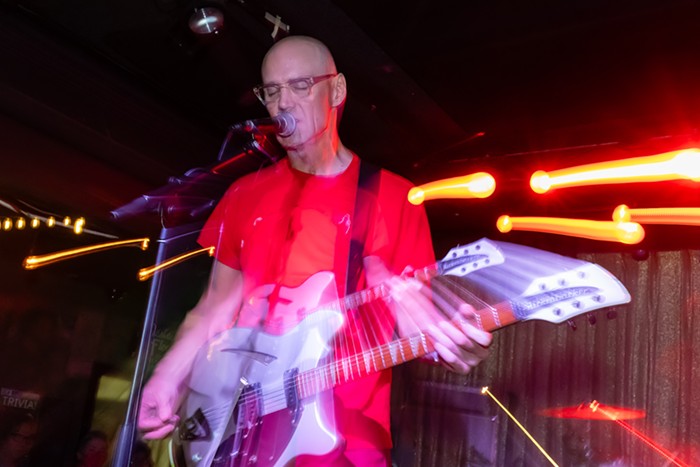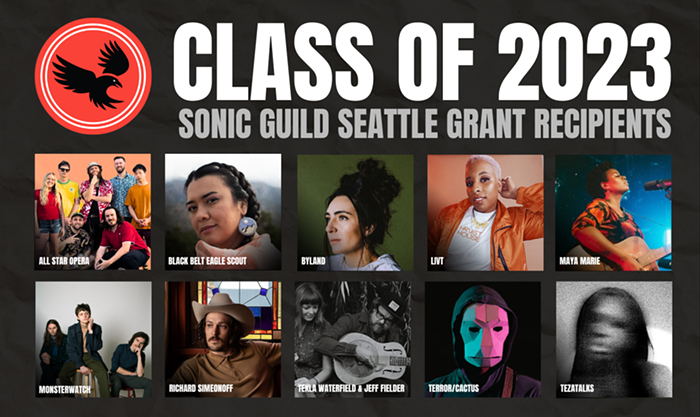Sat Oct 30, Les Amies, 8 pm, $22 adv./$25 DOS.
In 1979, French pop genius Serge Gainsbourg flew to Jamaica and became the first white man to record a full-length record, Aux Armes Et Cætera, with a duo called Sly & Robbie. At the time, the partnership of drummer Sly Dunbar and bassist Robbie Shakespeare was a popular one on the island but unknown in much of the West. A unit since 1975, the Kingston pair's influence on reggae (the very foundation and structure of its sound) is so extensive it's embarrassing. By the time Gainsbourg put his foot on Jamaican soil, the Rhythm Twins, as Sly & Robbie are often called, had recorded with practically all of the local big names--Peter Tosh, Bunny Wailer, King Tubby, and Gregory Isaacs.
Sly & Robbie's relentless output has resulted in a vast galaxy of recordings with many (indeed, too many) bright points; but to help assemble an essential collection of sorts, a selected history of their best tracks is below.
"Pass the Koutchie"
In 1981, the Mighty Diamonds release "Pass the Koutchie." The track's drum-and-bass rhythm, which is provided by Sly & Robbie, becomes one of the most recognizable rhythms in reggae because it's used and reused in dub and dancehall versions. The song itself--which is about passing a spliff--is reworked a year later by a group of Birmingham teens called Musical Youth into "Pass the Dutchie" (which means "cooking pot"), a song that introduces a generation of white kids in Europe and America to reggae pop.
"Shine Eye Gal"
The reason Black Uhuru are in the same sphere of fame as Inner Circle in the early '80s is because Sly & Robbie are producing their albums, the best of which is Guess Who Is Coming to Dinner. The record has seven tracks, each opening with the original song and closing with the version (the dub). The first track, "Shine Eye Gal," has one of tightest and most elemental bass-and-drum sets ever recorded--Sly is a man machine and Robbie is the soul of that machine.
"I've Seen That Face Before (Libertango)"
A year after performing with the future Governor of California in Conan the Destroyer (1984), Grace Jones releases a collection of singles under the title Island Life. Sly & Robbie work on several of the collection's tracks--the pornographic "Pull Up to the Bumper," the super high-tech "Walking in the Rain," and the Parisian noir "I've Seen That Face Before," which has a steady drum beat and heavy bass line shrouded in the mist of a melancholy accordion. Sly & Robbie's work with Grace Jones, which begins in 1980, globalizes their operation--during the Reagan years, the duo collaborates with Mick Jagger, Bob Dylan, and Nile Rogers.
"Murder She Wrote"
Long before ragga celebrity Sean Paul becomes as popular as Sean Combs, Sly & Robbie produce what will stand as the first international ragga hit, "Murder She Wrote" (1993). The track is impressive for several reasons. One: Sly doesn't play the drums here, but, as is the case with much of what he now creates, programs them. Two: Most musicians who established their reputations during the roots reggae period of the '70s never made the transition to the digital, ragga sounds ("bam bam") that presently rule Jamaican pop. Indeed, many roots men like Clinton Feron (formerly of the Gladiators), abhor the new music because of its total lack of live instruments and shocking simplicity. "Murder She Wrote" sounds like it was made on a pocket calculator.
"The Lost Voices"
A great pop artist is defined by the ease with which he or she moves between the mainstream and the underground. Such is the case with Sly & Robbie, who can produce music that is easily pop or, as they do in 1999 with Strip to the Bone, release music that is defiantly experimental. In 2003, they go even deeper into the underground and collaborate with Japan's beat scientist DJ Krush on the richly dark dub track "The Lost Voices" (The Message at the Depth). Combined with DJ Krush's space effects, the sheer energy of Sly's drums and the intelligence of Robbie's bass lines totally eclipse the fact the Rhythm Twins have been together for over a quarter of a century. In "The Lost Voices" and other recent works, we have yet to detect any signs of exhaustion.



















